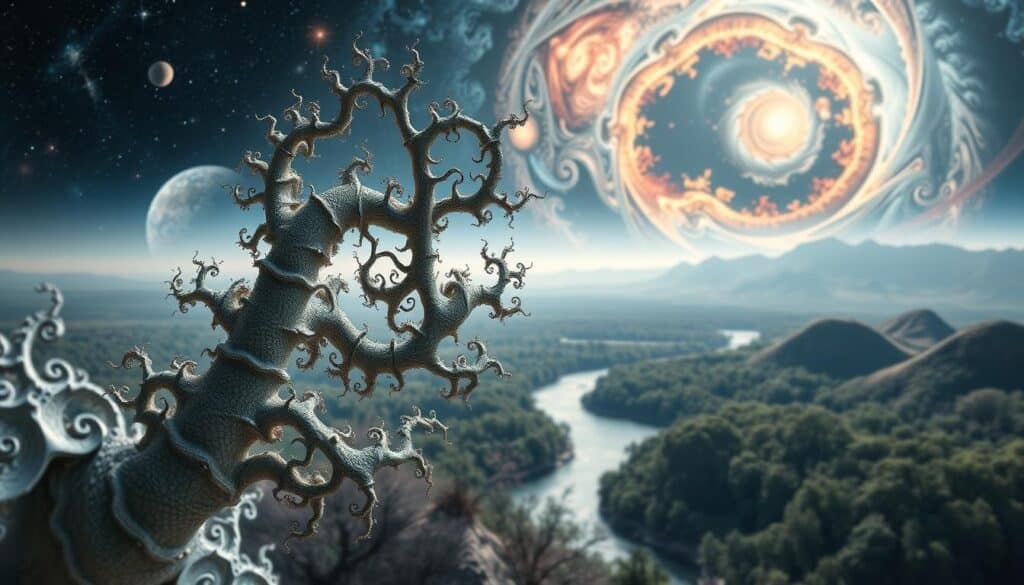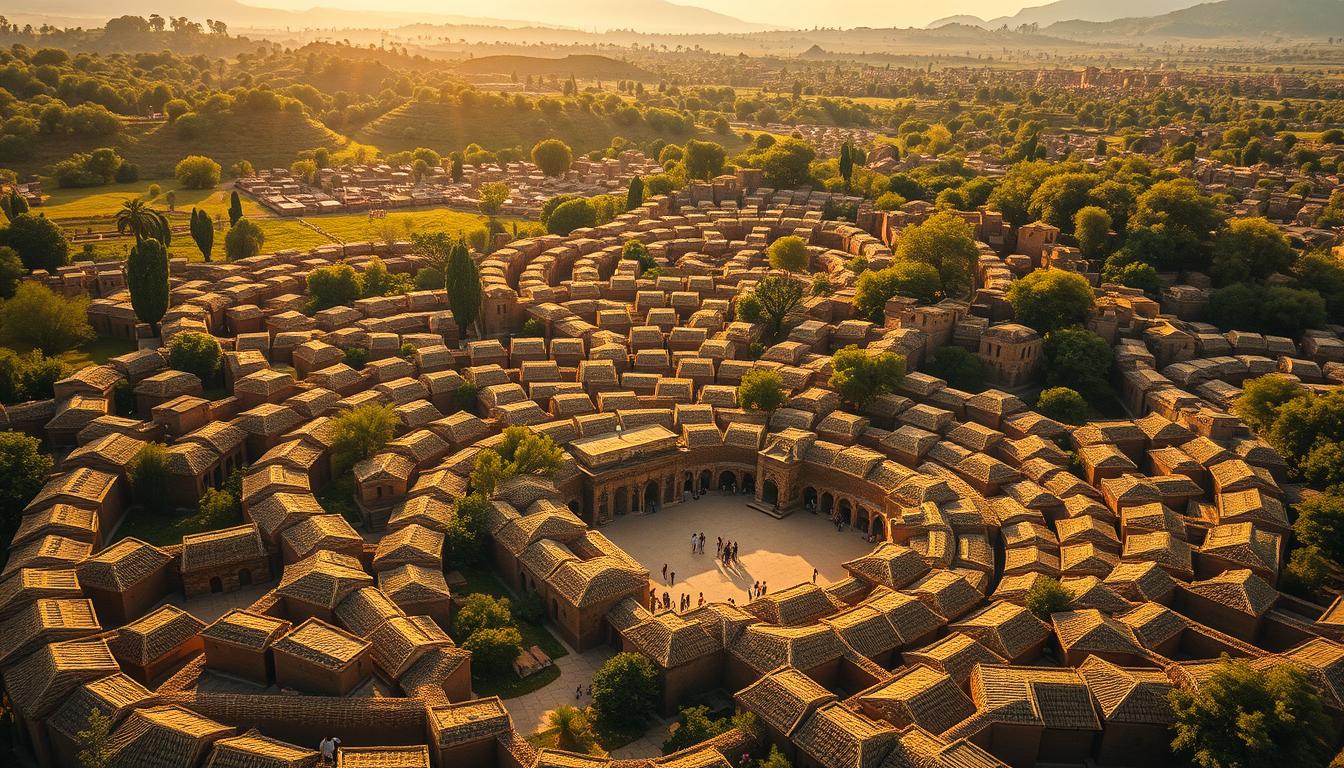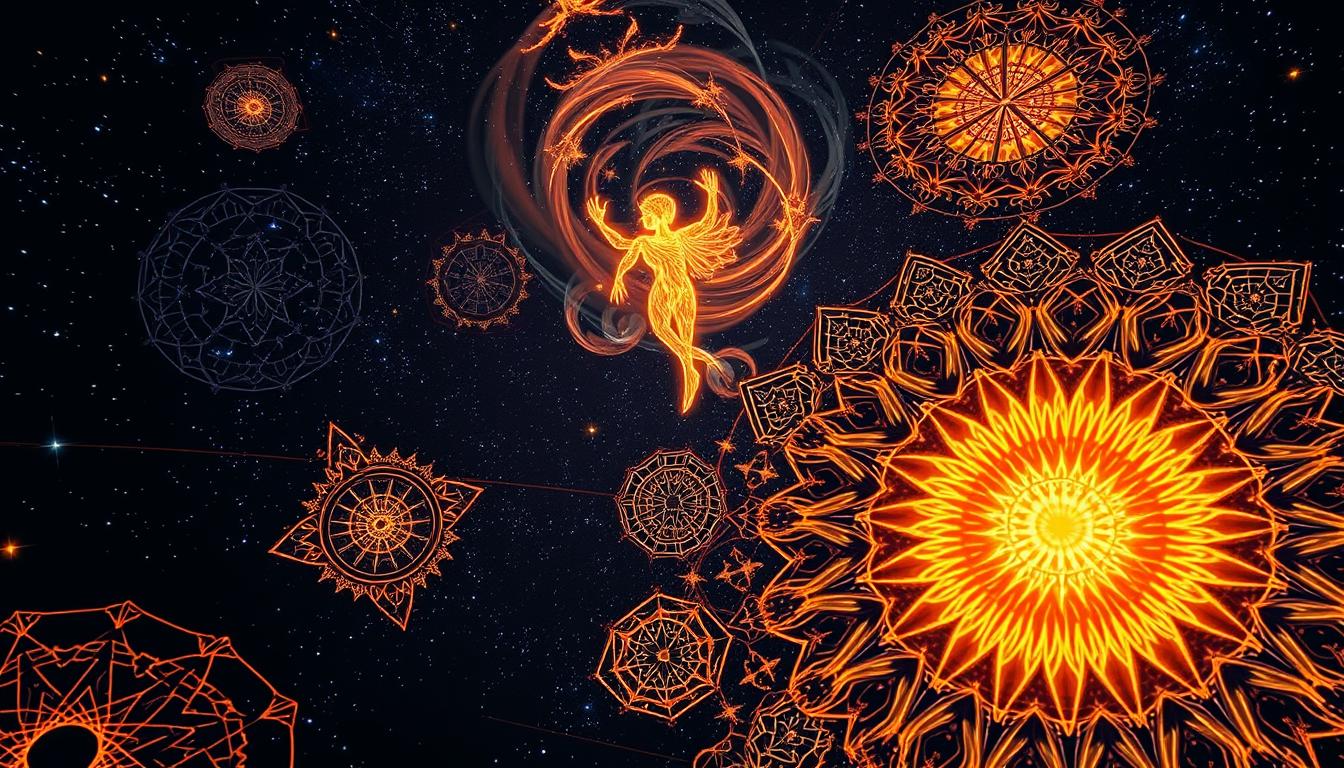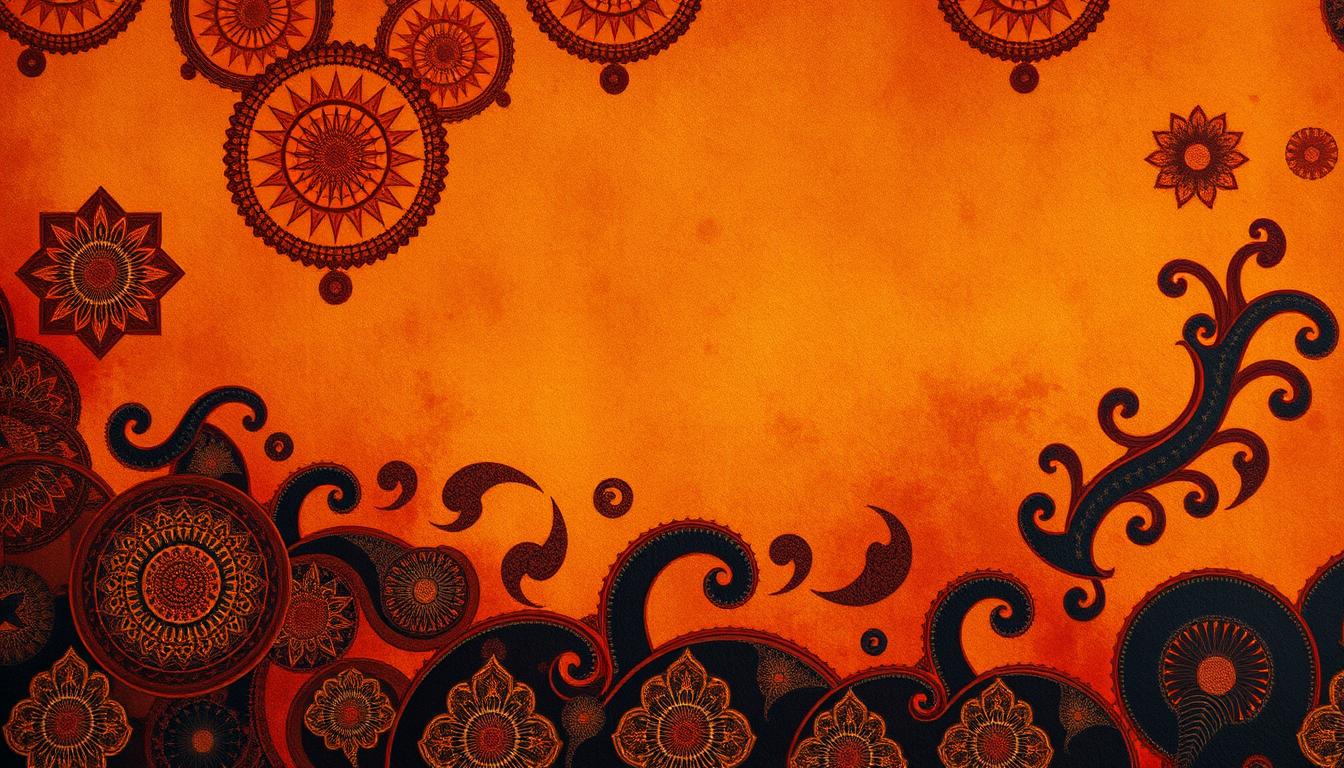Fractals hold deep spiritual meaning in indigenous cultures. They are more than just complex math structures. They show a deep bond with the universe and nature’s divine layout.
In various indigenous communities, these patterns symbolize unity and connection. They demonstrate how all life forms are related. Indigenous fractals are seen in art, rituals, and spiritual practices. They mirror a cosmic balance linked to humanity’s search for meaning.
We will look closer at how fractals fit into art and spirituality. Their role in indigenous traditions is crucial.
Understanding Fractals and Their Natural Presence
Fractals are complex patterns that are similar across different sizes. These intricate designs are studied by mathematicians for their beauty. We see fractals in nature everywhere. Examples include tree branches, snowflakes, and coastlines. All these show how fractals appear in the world around us.
Benoit Mandelbrot was a key figure in fractal mathematics. He showed that simple shapes don’t capture nature’s complexity. By looking at these patterns, Mandelbrot changed how we see geometry and nature. Fractals in nature suggest a deep connection and harmony, showing how everything is linked.
Studying fractals helps us find patterns that echo in nature. They bridge math and the natural world, showing us the complexity in simple forms. This invites us to see the beauty in detailed structures.

Fractals in Nature: A Reflection of Spirituality
Nature’s fractals are like a mystical tapestry in our surroundings. They range from mountain edges to tree branches. These patterns show a deeper meaning to life, hinting at a connection between all living things. This similarity underlines the harmony seen in different cultures.
Every part of nature has a story, linking form to spirituality. Lightning, for example, displays chaos and order together. It shows the balance in spiritual beliefs. Life’s complexity in ecosystems mirrors fractal geometry. This highlights how nature, spirituality, and life are closely knit.
Nature’s fractals are a visual language of divine concepts cherished by many cultures. Seeing these patterns deepens our appreciation for the earth and sparks spiritual awareness. It helps us see our place in the cosmos. Nature’s beauty captures our eyes and feeds our spirit, urging us to explore our bond with the universe.
Fractals in Indigenous Cultures: Spiritual Significance of Fractals
Fractals play a big role in indigenous cultures. They show up in stories, rituals, and daily life as important symbols. These designs show connections between earth, sky, and community. They share cosmic truths in many traditions.
For example, Native American tribes use fractal designs in their art and stories. These patterns show how everything in life is connected. They aren’t just for looks; they reflect a world view that values harmony and balance. They match with the cycles of nature.
In Afro-centric cultures, fractal patterns can be found in clothes, body art, and buildings. This shows a deep understanding of geometry mixed with spiritual beliefs. Fractals in these cultures serve a bigger purpose. They carry wisdom and stories for the future.
The spiritual meaning of fractals in indigenous cultures is deep and universal. They go beyond just looking nice. Fractals help build community identity and shared beliefs. They show that fractals are key to cultural expression and spiritual paths all over the world.
The Role of Fractals in Indigenous Art and Design
Fractals play a big part in the beauty of indigenous art and design. They mix math and culture in a unique way. You can find these patterns in things like clothes, pottery, jewelry, and buildings.
The complex designs of fractal art do more than just look nice. They tell stories of community values and spiritual ties.
Indigenous designs show a deep respect for nature and the universe. By using fractal patterns, artists link their work with the environment. These repeating and symmetrical designs symbolize unity and connection, making them more than just pretty.
Looking at fractals through art lets us see the depth of indigenous cultures. Each piece tells a story that connects us to the community’s beliefs and ways. Fractal motifs keep important traditions alive, letting us all see their deep meanings.
Symbolism of Fractals in Native American Traditions
In Native American cultures, fractals are crucial. They carry deep meanings in art and spiritual practices. These symbols show how everything in life is connected. They also remind us of nature’s cycles. Tribal artwork, like textiles, pottery, and murals, use repeating designs. These designs speak of life’s harmony and continuity.
Many tribes see these patterns as a way to understand their spirituality. Fractals can represent life’s journey, showing growth and change. Traditional stories often include these designs. They stress the value of community and living in harmony with nature.
Fractals are also found in sacred ritual spaces. They make spiritual experiences feel closer to the earth. By using fractals, cultures keep their identity alive. They also show a deep love for the patterns found in nature.
Fractals in African Cultures: A Deep Mathematical Connection
African fractals show us how deep math is in their culture. Ron Eglash’s work finds fractal designs in indigenous villages. These patterns show they understood complex math before many Western ideas appeared.
Fractals in African art highlight important local knowledge. Every shape tells a story, linking architecture to beliefs. This shows their deep understanding of geometry and how culture and math are in tune.
African fractals are more than just pretty designs. They express identity and spirituality. The mix of art and math shows the richness of these cultures. It proves their fractal knowledge is profound, not just for looks.
Comparative Perspective: Fractals in Various Indigenous Practices
Fractals are a thrilling way to study different indigenous practices around the world. Through cultural comparisons, we see unique and shared themes in fractal patterns. Various groups use these designs in rituals, art, and stories, showing their unique views of the world.
When looking at spirituality, fractals show similarities among indigenous cultures:
- Many Native American tribes put fractal patterns in pottery and weaving. This shows their connection with nature.
- African tribes decorate textiles with fractals. This highlights their community heritage and spiritual connections.
- In Indigenous Australian art, fractal motifs tell complex stories. They’re about the Dreamtime and ancestors.
These fractal elements, while unique to each culture, create a feeling of unity and shared understanding. The complex patterns show a universal respect for nature and spirituality. This shows how fractals help us understand the mysteries of life more deeply.
The Universal Theme of Fractals in Spiritual Beliefs
Fractals are a key part of spiritual beliefs around the world. Many cultures see these patterns as a map of the universe. They show how all living things are connected. Spiritual traditions use these designs to search for life’s meaning, beyond just one person’s experience.
Fractals reflect the universe’s order, sharing secrets about life and the laws of reality. Indigenous cultures see fractals as holy signs that teach important lessons. This shows how people everywhere aim to understand life. It highlights a unity among different kinds of spiritual teachings.
Conclusion
In our journey through fractals and their sacred role in indigenous cultures, we’ve discovered links between nature, math, and spirituality. These patterns reflect life’s complexities, showing how the physical and spiritual are connected. This discussion on fractals sheds light on the wisdom in these traditions. It shows why they matter today.
Fractals speak a universal language, crossing borders and cultural divides. From Native American cultures to African art, they symbolize nature’s harmony. They prompt us to rethink how we see ourselves in the universe. They encourage us to find deeper ties to land and community.
By appreciating different viewpoints, we can adopt a fuller understanding of knowledge. Seeing the beauty and spiritual meaning in fractals opens doors to worldwide connections. Exploring fractals leads us to examine our beliefs and how they influence our view of the world.



